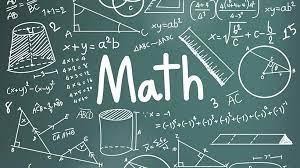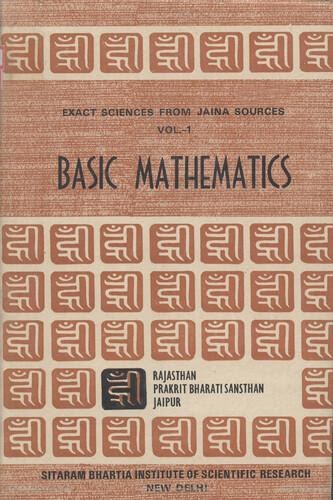
Various criticisms levelled against the present Euro-American Western Science characterized by particular-ism and reductionism that began with Descartes, Newton, Copernicus and Galileo in the 16th-17th century, as it tries to set the standards for knowledge in other fields. It is being realized more and more that the claims of science that it alone provides valid knowledge and that such rational knowledge began only in the 17th century are turning out to be baseless. This type of science had mainly attacked the religious knowledge around the world as irrational, illogical and full of superstition. But now, it is slowly beginning to emerge that science took a very myopic view and that knowledge, religious or otherwise, could not be condemned in its entirety, for it contained lots of knowledge that was as good as any science. In this light, L.C. Jain looks into the canonical writings of the Jain religion. Jainism is one of the world’s oldest living religions, as old as the Vedic religion. It is generally identified with Vardhman or Mahavira, a contemporary to Gautam the Buddha, Mahavira was only the 24th Tirthankar in a long series of inspired prophets or seers (Tirthankars). The Jains believe in conquering the flesh in order to attain that supreme purity which leads to infinite knowledge, infinite happiness and infinite power, very similar to what other religions of India have also sought. Although Jainism and Buddhism both accept the authority of revealed knowledge and transcendental experience, they deny the authority of the Vedas, particularly the ritualistic portions. So they are considered unorthodox in Indian religions. In time the Jain religion developed into two different branches, the Digambars and the Shwetambars. Digambars insist on extreme asceticism and do not care to cover their bodies, and Ambar, the sky, to be the natural cover. The Shwetambars, however, put on white robes to cover their bodies.
L.C. Jain is the Honorary Director of the Acharya Vidyasagara Research Institute, Jabalpur, specialized in applied mathematics and Jain mathematics. His works include publications in unified field theory, history of Indian mathematics and history of sciences. In his paper, Scientific Ideas in Jaina Canonical Writings and Traditions ( In Thought and Culture in India (from c.600 BC to c. AD 300), he mentions that the total Jaina canonical writings are in twelve angas (portions). The twelfth anga is regarded as the most voluminous, difficult to understand and intricate, comprising the mathematical theory of karma. This knowledge is termed traditional (agama). It is also known as shruta (heard or scriptural). The word purva refers to the knowledge that existed in India even before Lord Mahavira. Out of the fourteen purvas of the twelfth anga, the Digambar Jaina School has only a small part from the second and the fifth purva.
Jains point out that this century’s development in system theory and cybernetics could compare the theory of karma. Both the schools, Shwetambar and Digambar, developed scientific ideas through intuition and logic, conforming to their cosmology and karma theories through post-universal, mathematical details. They had geographical, astronomical, cosmological units along with karma theoretic units, and the Digambars had symbolico-mathematical units in addition. L.C. Jain, in this paper, tries to look into the scientific ideas in the Jain canons under the following heads:
- Mathematical Ideas
- Topological Ideas
- Cosmological, Astrological and Geographical Ideas
- Ideas about Material particles and
- Systems theoretic and Cybernetic Ideas.
Mathematical Ideas

L.C. Jain tells us that Mahaviracarya (9th century AD), who belonged to the Digambar Jaina School, spoke highly about mathematics. According to Rangacarya, his classification of arithmetical operations is simpler and his rules fuller than those of Bhrahmagupta. He also gives a large number of examples for illustration and exercise.
David Eugene Smith said that the works of Brahmagupta, Mahaviracarya and Bhaskara might be described as similar in spirit but entirely different in detail. For instance, all of these writers treat the areas of polygons, but Mahaviracarya is the only one to make any point of those that are re-entrant. All of them touch upon the area of a segment of a circle, but all give different rules. The shadow problems, primitive cases of trigonometry and gnomonic, suggest a similarity among these three great writers. Yet, the writings of Mahaviracarya are much better than those of either Brahmagupta or Bhaskara. Mahaviracarya gives correct rules also for the area of a triangle as well as of a quadrilateral. He also inferred that if a sum is to be distributed to none, the sum remains unaffected.
E. T. Bell has remarked that the rule of signs became common in India after their restatement by Mahavira in the 9th century. The first clear recognition of imaginaries was Mahavira’s brilliant remark that a negative number has no square root in the nature of things.
Many terms are in some manner related to only Jain mathematics. L. C. Jain enumerates some of them as:
Parikamma (Parikarma):
L.C. Jain tells us that besides certain other meanings, Parikarma also means a special type of mathematics or Calculation (samkhyana). Mahavira mentions that it includes eight types of fundamental mathematical operations: pratyutpanna, bhagahara, varga, vargamula, ghana, ghanamula, samkalita and vyutkalita. These were used in the karananuyoga group of works and the Karma theory.
Rasi:
L. C. Jain, in one of his articles on the topic, ‘Set theory in Jaina school of Mathematics,’ L. C. Jain enumerates the synonyms of rasi as samuha, ogha, punja, vrnda, sampata, samudaya, Pinda, avasesa, abhinna and samanya, which are related to sets. The units constituting sets are samaya (indivisible, instant), pradesa (space occupied by an ultimate particle), avibhagi praticcheda (indivisible-corresponding section), varga (variate), samayaprabaddha (instant-effective-bond), and so on.
There are two types of rasi in general. One is the sattatmaka (existential) and the other is the racanatmaka (constructional)
Raju:
The literal meaning of Raju is ‘rope’. Here, Raju is taken as a unit of measure. Seven rajus make a jagasreni (universe line), the unit of cosmological measure, the base of being the universe a square with a side equal to one jagasreni. The height of the universe is two jagasrenis: one jagasreni for the lower universe and remaining for the upper. In between is the middle universe with a width of one raju from one end to another, containing islands and ring oceans, each having a width two times the preceding one.
Yojana:
This term represents a linear length or distance measure. It has a set-theoretic base since it is related to angula and in turn to palya sets. The yojana is meant for geographical, astronomical and cosmological measures of 4 krosas or 768,000 angulas. Yojana is as mysterious as the Chinese ‘Li’, for different authorities have given different values to modern measurement units. A raju can be equivalent to innumerable yojanas.
Kalasavarna:
Mahaviracarya has described this as fractions of six sub-types called gunana, bhaga, varga, vargamula, ghana, ghanamula, summation, based on these operations.
Yavat-Tavat:
Yavat- Tavat denotes those limits to which the quantities are to be extended, or some simple equation is to be framed. Its meaning is also taken as, ‘as far as…. up to that. . .’ It is used in the multiplication and summation of series.
Palya (Palla):
L. C. Jain says that the literal meaning of Palyais a pit in proper circular cylindrical form, which is used for filling up and exhausting it for the process of constructing instant sets. Palya is of three types: angula or yojana, vyavahara, uddhara and addha, which are instant-sets, given in years.
Avalika (avalia):
It means a trail and denotes an ordered set of instants (samayas).
Apart from the above, Ardhaccheda, Vargasalaka, Vargita-samvargita, Sthana and Vikalpa, and so on, there are some other words related to Jain mathematics.
Topological Ideas
The Jaina school proceeds to define abstract structures of sets through concrete structures of islands and oceans in the middle universe (Madhya Loka). The first island is the Jambu of 1 lakh yojana. Subsequently, the alternate series of ocean and islands occur. These subsequent rings are twice the width of the preceding ring. The widths of the rings form a geometrical progression, and their various types of (inner, middle and outer) diameters are compared along with the areas of the rings. The largest diameter is subjected to logarithm to base two, getting the number of bisections of a Raju, the cosmological unit of distance, related to the number of astral bodies set in the islands and oceans. With the help of this topological cosmology, R. C. Gupta has explained how the first un-enumerable is produced through a long and tedious process.
Virasenacarya has mentioned similar topological situations through various types of vikalpas (abstractions). The word vikalpa (abstraction) is used for the theory of Bhanga Vidya, the method of permutations and combinations, with geometric kuta structures, and for constructing a number greater than the cardinal or ordinal of a set. The terms used in arithmetical and geometric progressions are: adi, mukha, vadana and prabhava for the first term; Caya, uttara and visesa for common differences; Gunakara for common ratio; Gaccha, and pada for a number of terms; and sankalita dhana for the sum. The sums are also classified as adidhana, madhyadhana and uttaradhana.
Cosmological, Astrological and Geographical Ideas
In the texts of the Karananuyoga group, the geographical maps are wheel maps or T – O maps. There is symmetry in the depiction of north and south regions and proportionate divisions of mountains and rivers. The symmetry is still held for such maps of the rings of islands and seas beyond the Jambu Island. There is the flat conceptual earth on which the distances are measured in yojanas. The geometry of the map is mainly of a circle and a straight line. A variety of formulae are used with the area of a circle as A, d its diameter, r its radius, s as an arc of its segments whose height is h, c is the chord and p the perimeter or circumference.
In all the available Prakrit texts, a similar treatment of the heavenly bodies is given. There is a Yuga of 5 years as in the Vedanga jyotisa, with details of the motion of the sun and the moon (those of the planets having been lost with time). The motion of the sun and the moon has been arrived at by taking the real sun and the counter sun, and the real moon as well as the counter moon, placed exactly diametrically opposite. Similar treatment has been given to the planets, stars and constellations. The Jain shown model establishes the following principles:
- Recognition of a five-year Yuga.
- Description of the tithis and naksatrasthrough constant-set (dhruva-rasi) technique.
- Mathematics and prediction as a means.
- The rules for calculations of astronomical events.
- The consideration of solstices and equinoxes.
Time is measured as a function of shadow length related to solstices. Seasons could be computed or determined through gnomonic. Lishk has elucidated some more concepts about the moon’s phases, eclipses determination through colour frequency and their periodicity, lunar occultation with Citra (Chatratichatra yoga). So far as the cosmological ideas are concerned, the universe is finite with a volume of 343 cubic rajus, being ab-acterno and ad-infinitum, with an empty non-universe or empty space extending in all directions to infinity.
Ideas about Material Particles
The concept of matter in the physical sciences may compare the Jaina concept of pudgala with the concept of matter in the physical sciences. It is conceived as the fluent (dravya) in the sense of stuff of which the material universe is constituted. Interaction processes of fusion (Pud) and fission (gala) or integration and disintegration are also conceived in Jainism. The contents of the universe have been studied concerning dravya (substance), ksetra (quarter), kala (time) and bhava (phase). The contents being specifically the infinite number of pudgala ultimate particles, each endowed with control (guna) and mode or event (paryaya), each being permanent, non-living, extensive, physical, corporeal, concrete, active, changeable, some of them capable of becoming karma to be assimilated with the soul for fruition.
Jaina metaphysics explains that matter goes both adi and anadi parinamas (effects) regarding the changing nature of matter. Its adi parinamas are found in the transformation of its colour, taste, smell, touch, space, union, division, motion, sound and neither heaviness (gravity) nor levity. In contrast, its anadi parinamas are experienced in its dravyatva (fluentness), murtatva (tangibility) sattva (existentiality) etc. According to Jaina Agamas, matter is eternal and constant in number (of particles) existent in the past samayas, present and future samayas. Matter has samsthana (shape or figure), akrti, being active with origination, decay and permanence. The bodies of bios are made up of pudgala, the pudgala being existent in the grossest, gross, gross-cum-fine, fine-cum-gross, fine and finest, forms from the point of view of grossness and fineness, perceptibility and imperceptibility, tangibility and intangibility.
The ultimate particle (Paramanu) is indivisible, which cannot be cut or pierced, and that which cannot be annihilated by water, fire, etc.

Systems Theory and Cybernetic Ideas
L. C. Jain points out that Modern Systems Theory is a development of only about a century, and Cybernetics also had its origins in the 19th century. Like their geographical, astronomical and cosmological and mathematical models, the Jaina sources have models for their karma system theory as well. The model of the systems theory is itself based upon certain sub-systems.
The characteristics deciding whether an ultimate particle or group of such particles is in a karmic state are four as follows:
- Configuration (prakrti) group which is dynamical.
- Point (pradesa) group, showing the number of particles. In a configuration (Kinetic energy)
- Lifetime (sthiti) showing how long the karmic state concerned with a group of particles would last.
- Recoil impartation energy (anubhagu) [Potential energy] The configuration (prakrtis) is of eight following types, further subdivided into 148 types.
- Knowledge screening (Jnanavaraniya)
- Vision screening (Darsanavaraniya)
- Captivating (Mohaniya)
- Incapacitating (Antaraya)
- Genetic Coding (Nama)
- Inheriting (Gotra)
- Pathogenic (Vedaniya)
- Life timing or Ageing (Ayu)
Jain concludes by driving home the fact that the mathematical model of karma theory was developed as a unified theory in which many scientific ideas found their place. Mathematics provided the data in various types, having domains ranging from finite to innumerate and infinite magnitude. Sets were introduced as existential, and to give their measures or norms, construction theories were developed. Apart from the model of astronomy, other models are abstract; unless they are put to experimental verification, the theory of karma remains in the status of theoretical significance at present. Although it seems to be scientific perfect from the point of view of logic and intuition, it also requires practical verification for being established as a real model with concrete causality relations found like things as in modern science.
(Note: the essay is based on the source given below. For further enquiries and discussions, interested readers should contact Prof. L.C. Jain, Director, Vidyasagar Research Institute, Pisanhari Hills, Jabalpur, India)
Source:
L.C. Jain. 2001. Scientific Ideas in Jaina Canonical Writings and Traditions. In Life, Thought and Culture in India (from c. 600 BC to c. AD 300). Volume I Part 2. PHISPC: Centre for Studies in Civilization, New Delhi. Pp. 813-844.
Courtesy : https://www.infinityfoundation.com/mandala/t_es/t_es_shah_m_jain_frameset.htm


